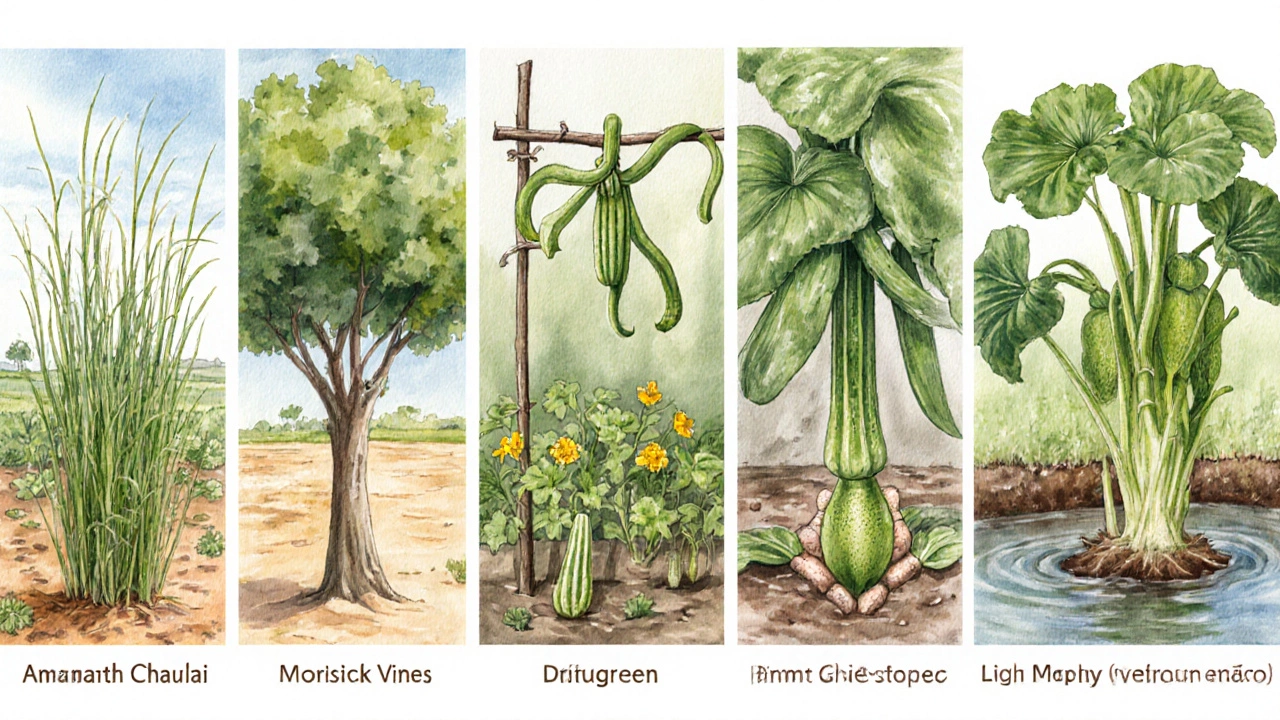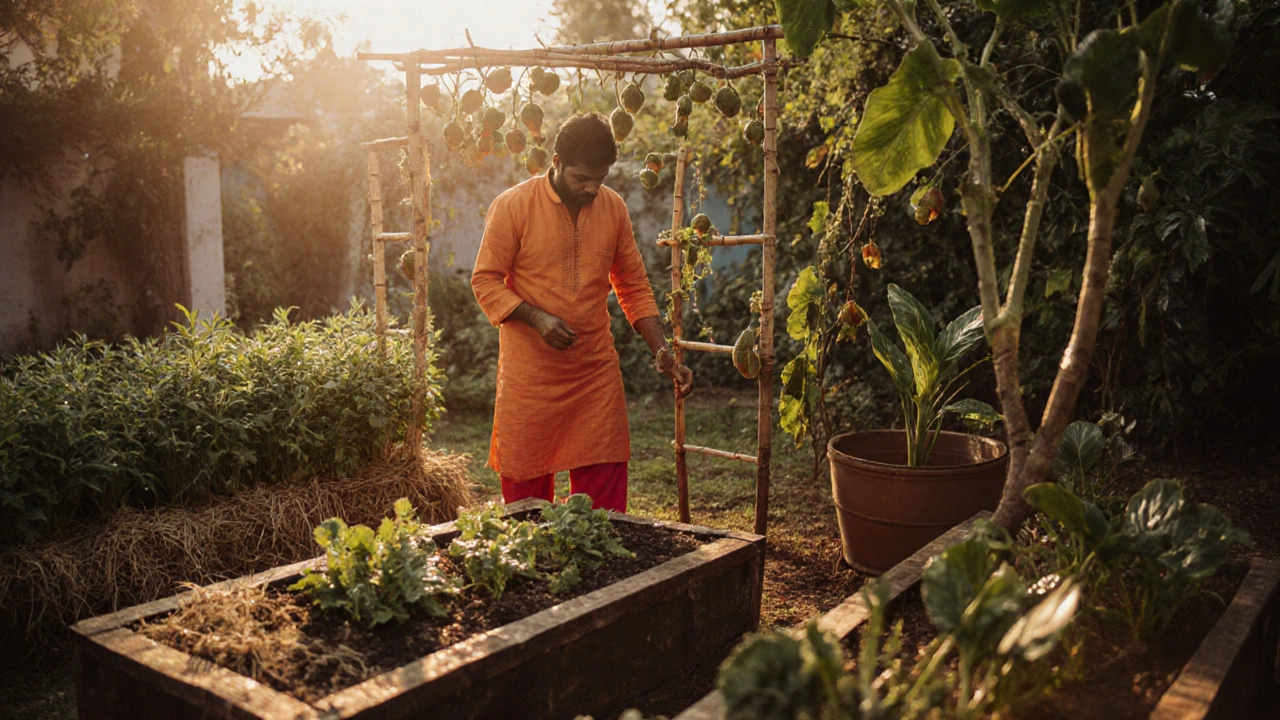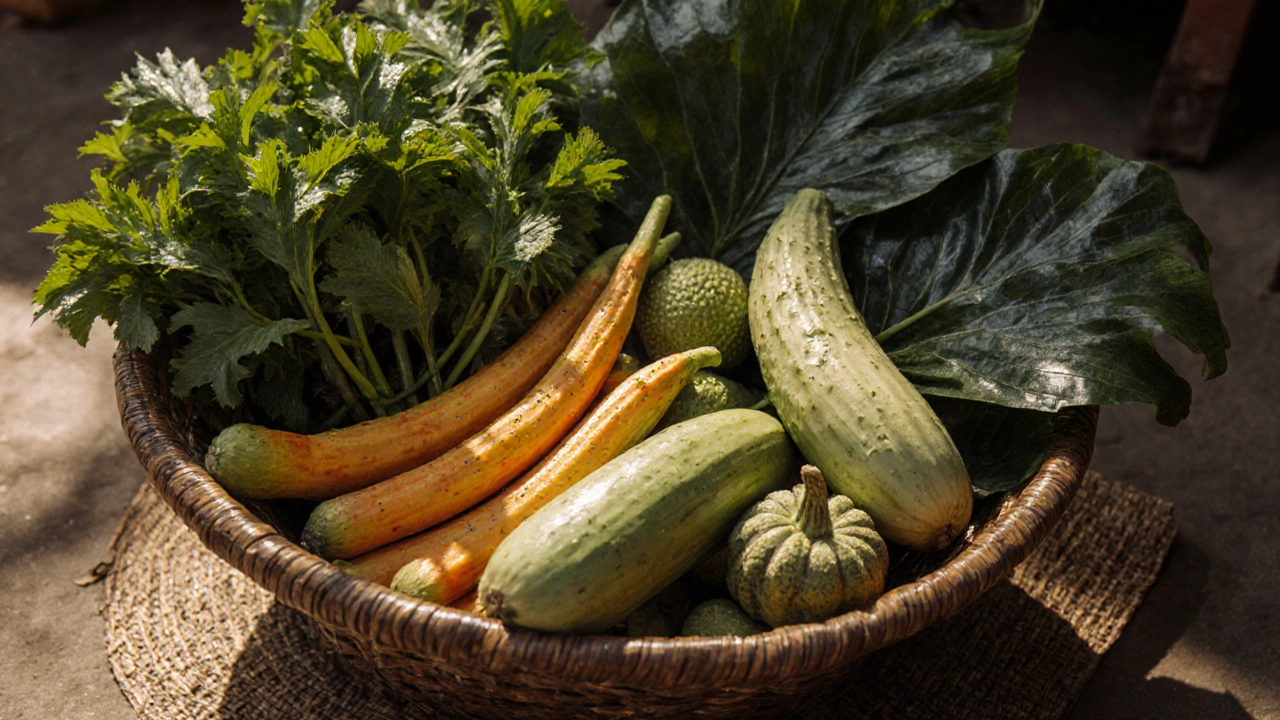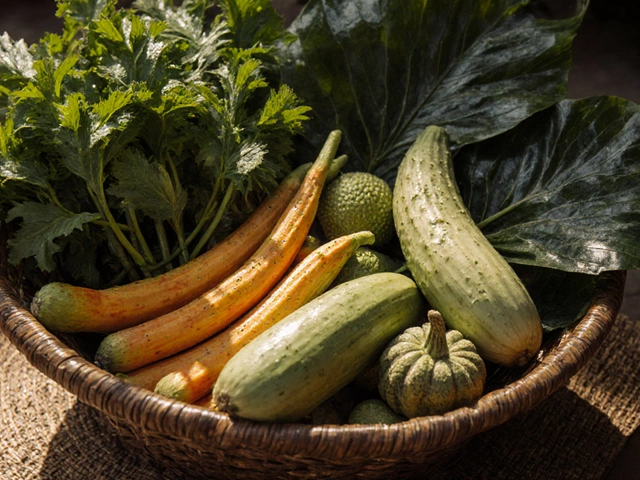Native Vegetable Compatibility Calculator
Select Your Conditions
When you hear the phrase Indian native vegetable is a vegetable species that originated in the Indian subcontinent and has been cultivated there for centuries, you’re looking at plants that are perfectly tuned to the country’s climate, soils, and culinary traditions.
Why focus on native vegetables?
Native veggies have a built‑in advantage: they tolerate local heat, monsoon rains, and the wide range of soil types found across the subcontinent. That means lower water use, fewer chemical inputs, and often a richer nutritional profile because the plants have evolved to store the nutrients the local environment provides.
Key native vegetables to know
-
Amaranth (Chaulai) is a fast‑growing leafy green that thrives in warm, well‑drained soils and is a staple in many Indian kitchens. Its leaves are high in iron and calcium, and the tiny seeds can be harvested for flour.
-
Drumstick (Moringa oleifera) is a drought‑tolerant tree whose pods are harvested as a vegetable and are packed with vitamin C, potassium, and protein. It grows well in the semi‑arid regions of central and southern India.
-
Bitter Gourd (Momordica charantia) is a climbing vine that produces warty, edible fruits known for their bitter taste and blood‑sugar‑lowering properties. It prefers humid, tropical climates and can be trained on trellises.
-
Bottle Gourd (Lagenaria siceraria) is a vining plant that yields a hard‑shelled, cylindrical fruit used in curries, soups, and even desserts. The gourds are adaptable to both hot summers and cooler winters if sown early.
-
Fenugreek (Trigonella foenum‑graecum) is an aromatic herb whose leaves and seeds are widely used in Indian spice mixes; the leaves are also a nutritious leafy vegetable. It tolerates light, loamy soils and moderate rainfall.
-
Tinda (Indian Squash) is a small, green, pea‑sized gourd that thrives in the monsoon season and is a common addition to North‑Indian gravies. It needs well‑drained soil and consistent moisture.
-
Colocasia (Taro) is a semi‑aquatic plant whose large, starchy corms and leaves are staples in eastern Indian cuisine, especially in Bengal and Assam. It grows best in water‑logged, loamy soils.
Climate and soil preferences at a glance
| Vegetable | Ideal Climate | Sowing Season | Preferred Soil |
|---|---|---|---|
| Amaranth (Chaulai) | Warm, 20‑35 °C | June‑July (monsoon) | Well‑drained loam |
| Drumstick (Moringa) | Semi‑arid, 25‑35 °C | April‑May | Sandy‑loam, good drainage |
| Bitter Gourd | Tropical, humid | May‑June | Rich, well‑irrigated |
| Bottle Gourd | Hot summer, 25‑38 °C | April‑June | Loamy, fertile |
| Fenugreek | Temperate to warm | July‑August | Light, loamy |
| Tinda | Monsoon, 22‑30 °C | June‑July | Well‑drained, fertile |
| Colocasia (Taro) | Humid, water‑logged | March‑April (for nursery) | Clayey, moist |

How to grow native vegetables in your Indian garden
- Choose the right location: most native veggies need full sun (at least 6 hours) and well‑drained soil, except for Colocasia, which prefers a damp spot.
- Prepare the soil: incorporate 2‑3 cm of compost or well‑rotted farmyard manure to improve fertility and structure.
- Seed treatment: soak bitter gourd and bottle gourd seeds for 12 hours to boost germination; pre‑germinate amaranth seeds on a damp cloth.
- Sowing: plant seeds at the depth recommended in the table above; keep spacing 30‑45 cm for most vines, 20 cm for leafy greens like amaranth.
- Watering: maintain consistent moisture during the first three weeks. After establishment, water deeply once a week for drought‑tolerant crops like drumstick; keep bitter gourd and colocasia moist.
- Support structures: install simple trellis or bamboo sticks for bitter gourd and bottle gourd. Drumstick trees need staking after 1‑2 m height.
- Mulching: apply a 5‑cm layer of straw or dry leaves to reduce evaporation and suppress weeds.
- Harvest: pick amaranth leaves as soon as they reach 10‑15 cm for tender greens; harvest drumstick pods when they are 10‑15 cm long; collect bitter gourd before they turn fully black for best taste.
Benefits of choosing native vegetables
Because these crops have co‑evolved with Indian weather patterns, they usually need less irrigation and fewer pesticides. That translates into lower costs for the home gardener and a smaller environmental footprint. Nutritionally, many native vegetables are richer in vitamins and minerals than exotic imports-think of the iron‑dense amaranth leaves or the protein‑packed drumstick pods.

Common pitfalls and pro tips
- Pest pressure: aphids love amaranth, while the fruit fly targets bitter gourd. Use neem oil sprays early in the morning to keep populations down.
- Over‑watering: colchasia will rot if the soil stays soggy without proper drainage. Ensure raised beds or container drainage.
- Timing errors: sowing drumstick too early in cold northern regions leads to stunted growth. Wait until the soil warms above 20 °C.
- Harvest window: missing the prime harvest period for bottle gourd results in hard, fibrous fruits. Mark the expected 70‑day window on your calendar.
Quick recap
Native Indian vegetables like Indian native vegetable varieties bring resilience, flavor, and nutrition to any kitchen. By matching each plant to its ideal climate, preparing soil well, and following simple watering and support practices, you can enjoy a year‑round harvest that’s both sustainable and delicious.
Frequently Asked Questions
Which native vegetable is best for beginners?
Amaranth (Chaulai) is fast‑growing, tolerant of a range of soils, and can be harvested multiple times, making it ideal for first‑time gardeners.
Can I grow these vegetables in containers?
Yes. Drumstick, bitter gourd, and bottle gourd all adapt well to large pots or raised beds, provided the container is at least 30 cm deep and has good drainage.
Do native vegetables need organic fertilizers?
Organic matter like compost or well‑rotted cow dung boosts soil health and works perfectly for these crops. Chemical fertilizers are not required and may even reduce their natural resilience.
What’s the typical yield for a drumstick tree?
A mature drumstick tree can produce 30‑50 kg of pods per season if watered regularly and pruned properly.
Are these vegetables safe for children?
Absolutely. Most native veggies are part of traditional Indian diets and are safe for all ages. Just ensure bitter gourd is cooked well to reduce its raw bitterness.


